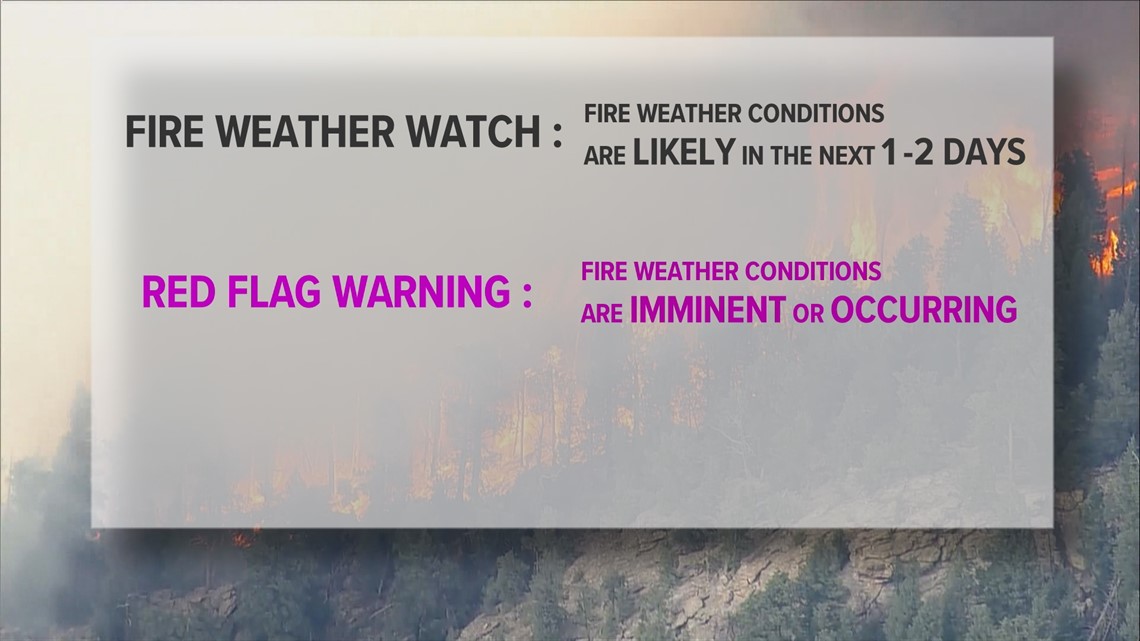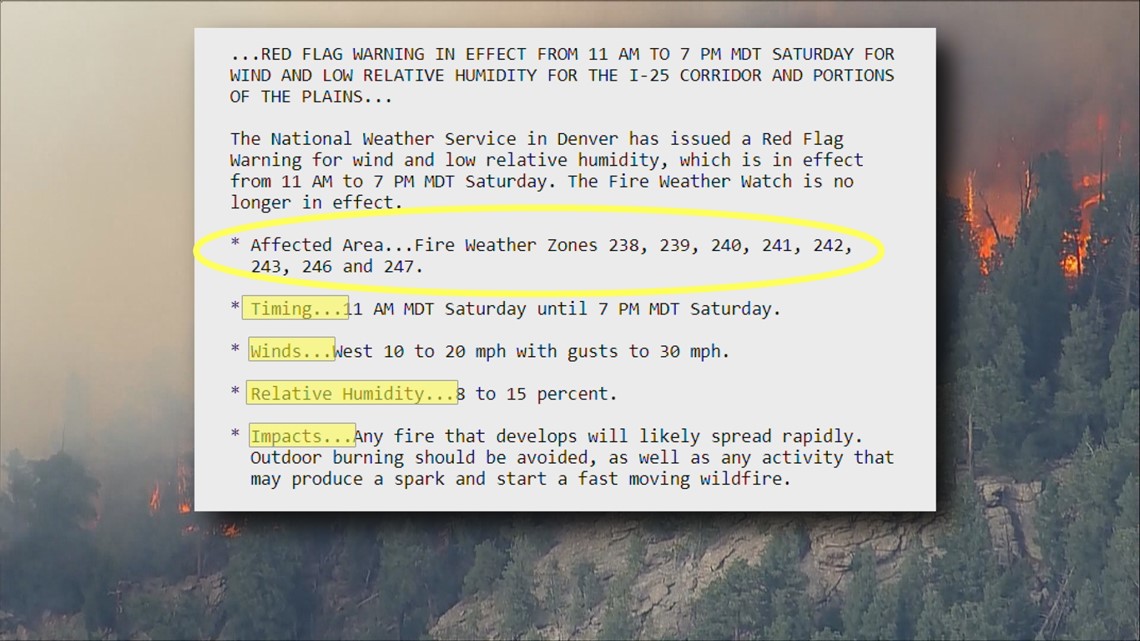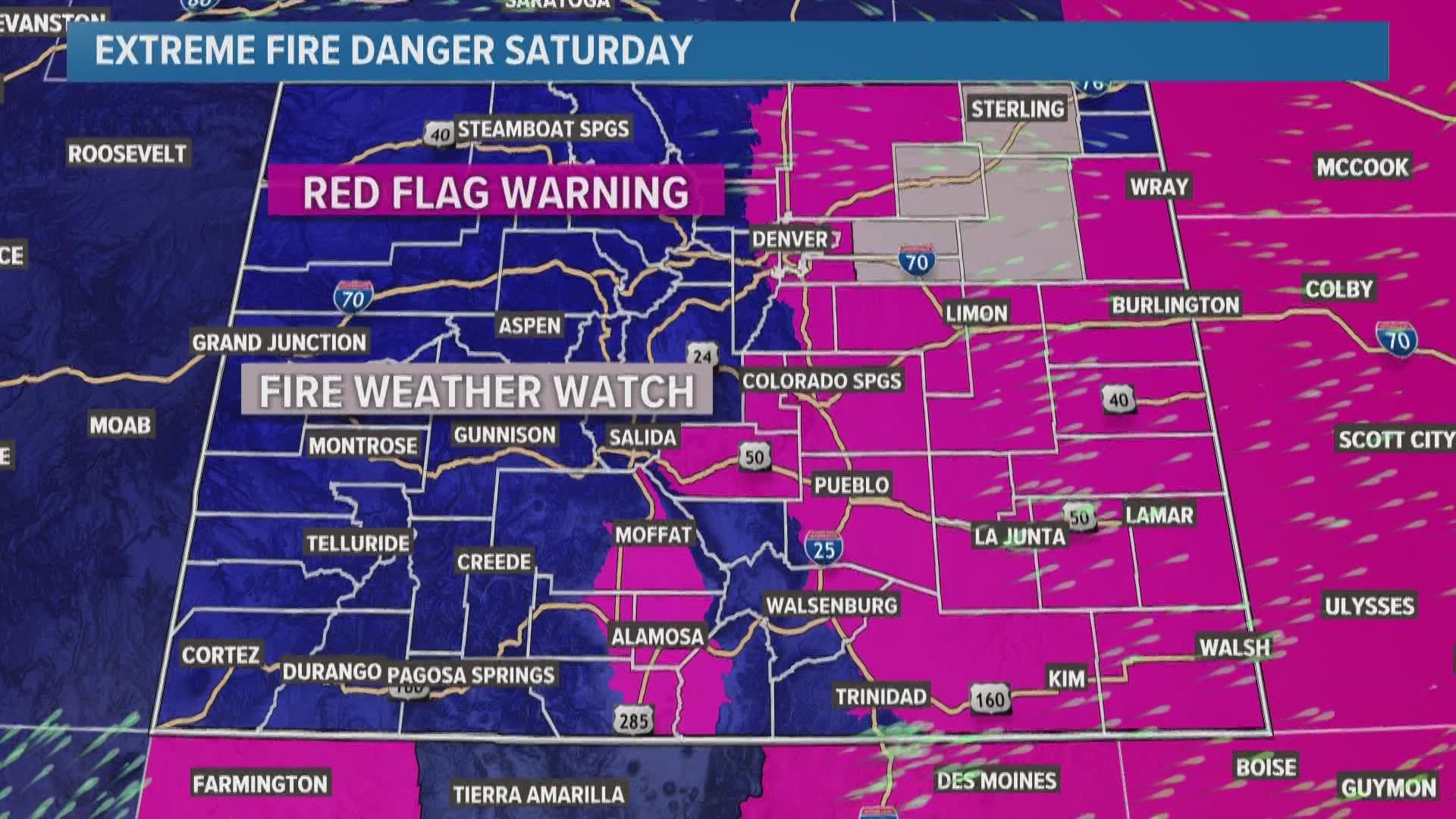BOULDER, Colo. — The National Weather Service (NWS) is responsible for forecasting fire weather conditions.
Fire weather is when high winds, low humidity and warm temperatures, combine with dry vegetation. These weather conditions can override any favorable pre-existing conditions in an environment, to make it easier for fires to start. It also makes it harder for firefighters to put them out and allows fires to spread very quickly.
There are four NWS offices that forecast fire weather in Colorado. The Boulder office handles 22 counties in northeast Colorado including the Front Range.
FULL FORECAST: Warmer, windy Saturday; cooler Sunday
They have issued a Fire Weather Watch for parts of the eastern plains for Saturday, and a warning for many other counties. But the warning is not called a Fire Weather Warning, its actually called a Red Flag Warning.
“Yea, it may not be entirely intuitive, but it was conceived really for use by land management agencies and not necessarily for public consumption," said Bruno Rodriguez, the lead fire weather forecaster at NWS Boulder. "Over time it’s become a public facing product.”


He said a Fire Weather Watch is issued when the weather conditions in the next one or two days are likely to lead to elevated wildfire danger.
A Red Flag Warning is issued when fire weather conditions are imminent or occurring.
Rodriguez said the key information is written into the watch or warning description. Everything there is easy to understand except maybe the affected area, which is sometimes listed by numbered zones.


Those are boundaries used by forecasters to finetune which areas are more likely to experience fire weather conditions.
“Certain things that factor into that would be the type of micro-climate that area tend to see," he said. "Maybe the type of vegetation that’s predominant in that zone, what type of terrain: is it a mountain zone, foothills zone, plains zone.”
Rodriquez said you can find the outline of the zones on their website, but the shaded area on the watch or warning map is the best way to know how close you are to fire weather conditions.
Here are some helpful links if you are looking for more detailed fire weather forecast information including discussions were meteorologists that issue the warnings, share their thoughts:
SUGGESTED VIDEOS: Colorado Climate

